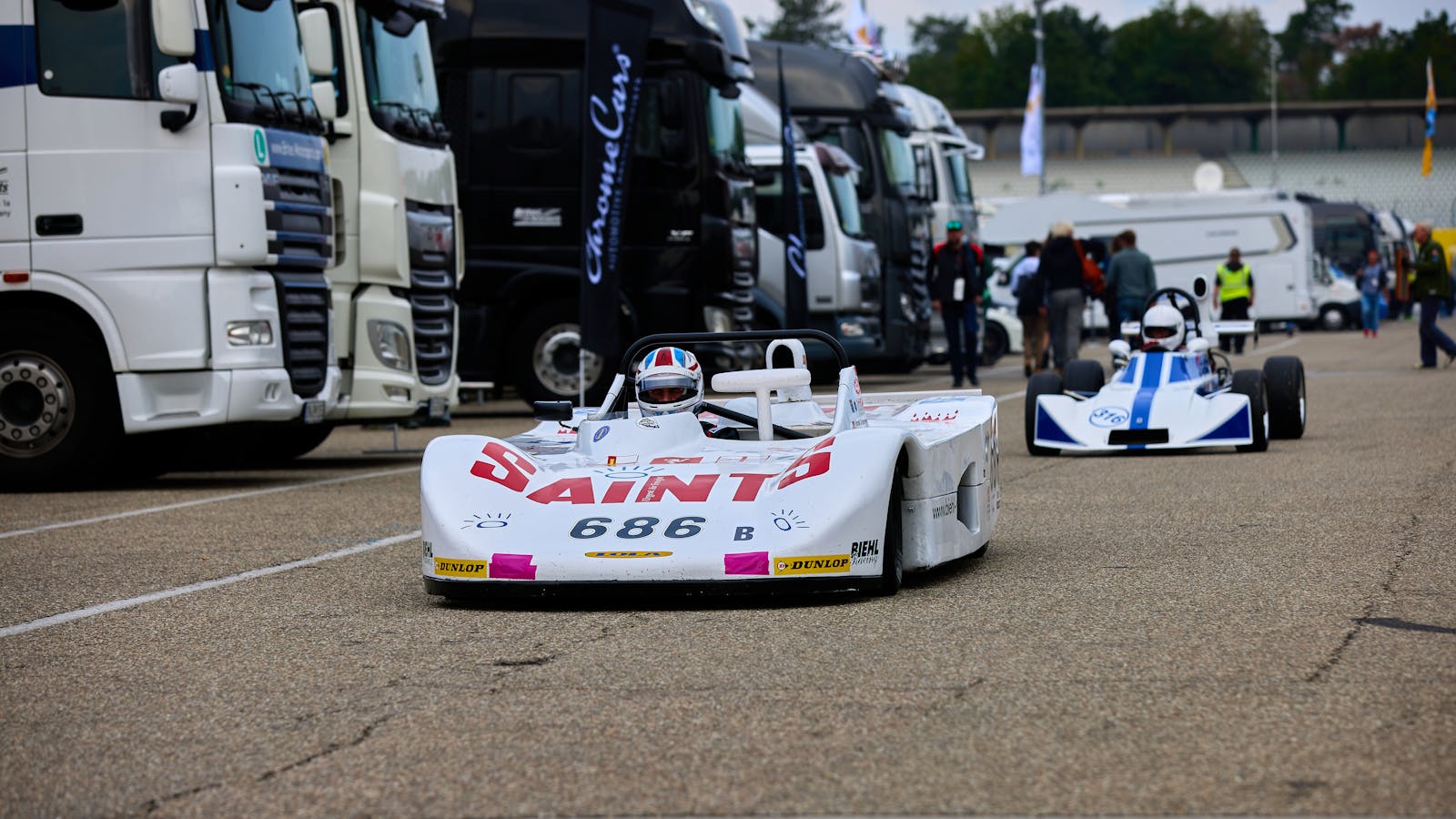Track racing cars represent the pinnacle of automotive engineering, designed specifically for high-speed competition on closed circuits. Unlike standard road vehicles, these machines are built with a singular focus: to achieve maximum performance in terms of speed, handling, and overall driving experience. The evolution of track racing cars has been influenced by advancements in technology, materials, and aerodynamics, making them some of the most sophisticated vehicles on the planet.
From the roaring engines to the finely-tuned suspensions, every aspect of a track racing car is meticulously crafted to ensure that it can withstand the rigors of competitive racing. The world of track racing is diverse, encompassing various forms such as Formula racing, sports car racing, and endurance racing. Each category has its own set of regulations and specifications that dictate the design and performance characteristics of the cars.
For instance, Formula 1 cars are engineered for maximum downforce and cornering speed, while endurance racers like those in the 24 Hours of Le Mans prioritize durability and fuel efficiency. This specialization means that track racing cars are not just fast; they are purpose-built machines that embody the spirit of competition and innovation in motorsport.
Key Takeaways
- Track racing cars are specifically designed for high-speed racing on closed circuits, with a focus on performance and handling.
- Key features of high performance track racing cars include lightweight construction, powerful engines, advanced aerodynamics, and precision handling.
- Top track racing cars for speed and acceleration include models like the Bugatti Chiron, Koenigsegg Jesko, and McLaren Senna.
- Top track racing cars for handling and control include models like the Porsche 911 GT3, Ferrari 488 Pista, and Lamborghini Huracan Performante.
- Top track racing cars for aerodynamics include models like the Aston Martin Valkyrie, Mercedes-AMG One, and Pagani Huayra BC.
- Top track racing cars for durability and reliability include models like the Ford GT, Chevrolet Corvette C8.R, and Porsche 911 RSR.
- Top track racing cars for customization and tuning include models like the Nissan GT-R, BMW M4, and Subaru WRX STI.
- When choosing the right track racing car for maximum performance, it’s important to consider factors such as speed, handling, aerodynamics, durability, and customization options.
Key Features of High Performance Track Racing Cars
High-performance track racing cars are distinguished by several key features that set them apart from conventional vehicles. One of the most critical aspects is the powertrain, which typically consists of a high-output engine paired with advanced transmission systems. These engines are often turbocharged or naturally aspirated V6 or V8 configurations that can produce upwards of 600 horsepower, allowing for blistering acceleration and top speeds that can exceed 200 mph.
The choice of materials in the construction of these engines is also crucial; lightweight alloys and composites are commonly used to reduce weight while maintaining structural integrity. Another defining feature is the suspension system, which is engineered to provide optimal handling and stability at high speeds. Track racing cars utilize sophisticated multi-link suspension setups that allow for precise adjustments to camber, toe, and ride height.
This level of adjustability enables drivers to fine-tune their vehicles to suit specific track conditions and personal driving styles. Additionally, high-performance brakes are essential for managing speed; carbon-carbon brake systems are often employed for their ability to withstand extreme temperatures and provide consistent stopping power.
Top Track Racing Cars for Speed and Acceleration

When it comes to speed and acceleration, certain track racing cars have earned their place in the spotlight due to their remarkable performance metrics. The Bugatti Chiron Super Sport 300+, for instance, has made headlines for its record-breaking top speed of 304 mph, making it one of the fastest production cars ever built. Its quad-turbocharged W16 engine produces an astonishing 1,577 horsepower, allowing it to accelerate from 0 to 60 mph in just 2.4 seconds.
This level of performance is not merely a product of raw power; it also involves advanced aerodynamics and lightweight construction that contribute to its incredible speed. Another notable contender is the McLaren P1 GTR, a track-focused variant of the already impressive P1 hypercar. With a hybrid powertrain that combines a twin-turbo V8 engine with an electric motor, the P1 GTR delivers a combined output of 986 horsepower.
This allows it to achieve a 0-60 mph time of just 2.5 seconds while maintaining exceptional handling characteristics on the track. The car’s active aerodynamics further enhance its performance by adjusting wing angles and ride height based on speed and cornering forces, ensuring that it remains glued to the asphalt even at high velocities.
Top Track Racing Cars for Handling and Control
| Car Model | Top Speed (mph) | 0-60 mph (seconds) | Braking Distance (ft) | Cornering G-Force |
|---|---|---|---|---|
| Porsche 911 GT3 RS | 193 | 3.0 | 97 | 1.20 |
| Ferrari 488 Pista | 211 | 2.85 | 96 | 1.15 |
| McLaren 600LT | 204 | 2.8 | 98 | 1.22 |
| Chevrolet Corvette ZR1 | 212 | 2.85 | 91 | 1.18 |
Handling and control are paramount in track racing, where precision can mean the difference between victory and defeat. The Porsche 911 GT3 RS is a prime example of a car that excels in this area. Renowned for its rear-engine layout and finely-tuned chassis, the GT3 RS offers exceptional balance and responsiveness through corners.
Its naturally aspirated flat-six engine produces 518 horsepower, allowing for rapid acceleration while maintaining a lightweight structure thanks to extensive use of carbon fiber components. The car’s active suspension management system further enhances its handling capabilities by adjusting damping forces in real-time based on driving conditions. Another standout in terms of handling is the Chevrolet Corvette C8.R, which has made waves in both GT racing and consumer markets.
The mid-engine layout provides an optimal weight distribution that enhances cornering stability and agility. Equipped with a naturally aspirated V8 engine producing around 500 horsepower, the C8.R is designed for competitive racing environments where precision is key. Its advanced traction control systems and adjustable aerodynamics allow drivers to tailor their experience based on track conditions, making it a formidable competitor in any race.
Top Track Racing Cars for Aerodynamics
Aerodynamics plays a crucial role in the performance of track racing cars, as it directly impacts speed, stability, and fuel efficiency. The Mercedes-AMG GT Black Series exemplifies how aerodynamic design can enhance a car’s capabilities on the track. With an aggressive front splitter, large rear wing, and active aerodynamics that adjust based on speed, this car achieves remarkable downforce without sacrificing top speed.
The GT Black Series is powered by a twin-turbo V8 engine that produces 720 horsepower, allowing it to reach speeds well over 200 mph while maintaining exceptional grip through corners. The Ferrari SF90 Stradale also showcases cutting-edge aerodynamic engineering. This hybrid supercar features an active aerodynamic system that optimizes airflow around the vehicle at various speeds.
Its combination of a twin-turbo V8 engine and three electric motors produces a staggering 986 horsepower, enabling blistering acceleration while benefiting from enhanced downforce generated by its aerodynamic profile. The SF90 Stradale’s design not only prioritizes performance but also incorporates elements that improve cooling efficiency and reduce drag, making it a prime example of how aerodynamics can elevate a track racing car’s performance.
Top Track Racing Cars for Durability and Reliability
In the world of track racing, durability and reliability are essential attributes that can determine a car’s success over long races or grueling conditions. The Audi R8 LMS GT3 is renowned for its robust construction and reliability in endurance racing scenarios. Built with a focus on longevity, this car features a naturally aspirated V10 engine that delivers consistent performance over extended periods without compromising power output.
Its chassis is designed to withstand the rigors of long-distance racing, with reinforced components that ensure it can handle the stresses of high-speed cornering and braking. Another exemplary model is the Toyota GR Supra GT4, which has made significant strides in both amateur and professional racing circuits. Engineered for durability, this car features a turbocharged inline-six engine that provides reliable power delivery throughout races.
Its suspension system is designed to absorb shocks from uneven surfaces while maintaining stability at high speeds. The GR Supra GT4’s emphasis on reliability makes it an attractive option for teams looking to compete in endurance events where mechanical failures can be detrimental to overall performance.
Top Track Racing Cars for Customization and Tuning
Customization and tuning are integral aspects of track racing culture, allowing drivers to tailor their vehicles to meet specific performance needs or personal preferences. The Nissan GT-R Nismo stands out as a prime example of a car that offers extensive customization options for enthusiasts. With its advanced all-wheel-drive system and potent twin-turbo V6 engine producing 600 horsepower, the GT-R can be fine-tuned through various aftermarket modifications ranging from suspension upgrades to engine tuning kits.
This flexibility allows drivers to adapt their vehicles for different tracks or racing styles. The BMW M4 GT4 also exemplifies the importance of customization in track racing. Designed specifically for competitive environments, this car allows teams to modify various aspects such as suspension settings, aerodynamics packages, and engine tuning based on race requirements.
The M4 GT4’s platform is built with adaptability in mind; its lightweight construction combined with powerful performance makes it an ideal candidate for teams looking to optimize their setup for specific tracks or conditions.
Choosing the Right Track Racing Car for Maximum Performance
Selecting the right track racing car involves careful consideration of various factors including speed, handling, aerodynamics, durability, and customization options. Each driver has unique preferences and requirements based on their racing style and the types of events they participate in. Whether one prioritizes raw speed with models like the Bugatti Chiron or seeks precision handling with vehicles like the Porsche 911 GT3 RS, understanding these key features will guide enthusiasts toward making informed decisions.
Ultimately, the world of track racing cars is as diverse as it is thrilling, offering something for every type of racer—from weekend warriors to professional competitors. By delving into the specifics of each model’s capabilities and characteristics, drivers can find their perfect match that not only meets their performance expectations but also enhances their overall racing experience on the track.
When it comes to finding the best car for track racing, having a secure and luxurious garage to store your vehicle is essential. Luxury Condo Garages offers top-of-the-line garage spaces that are perfect for storing and maintaining your track racing car. With features like climate control, security systems, and customizable storage options, Luxury Condo Garages provides the ideal environment for keeping your prized possession in top condition. For more information on their services, check out their website here.








Leave a Reply